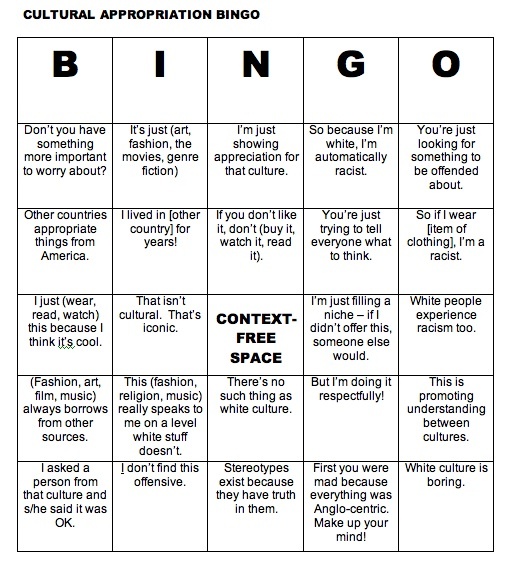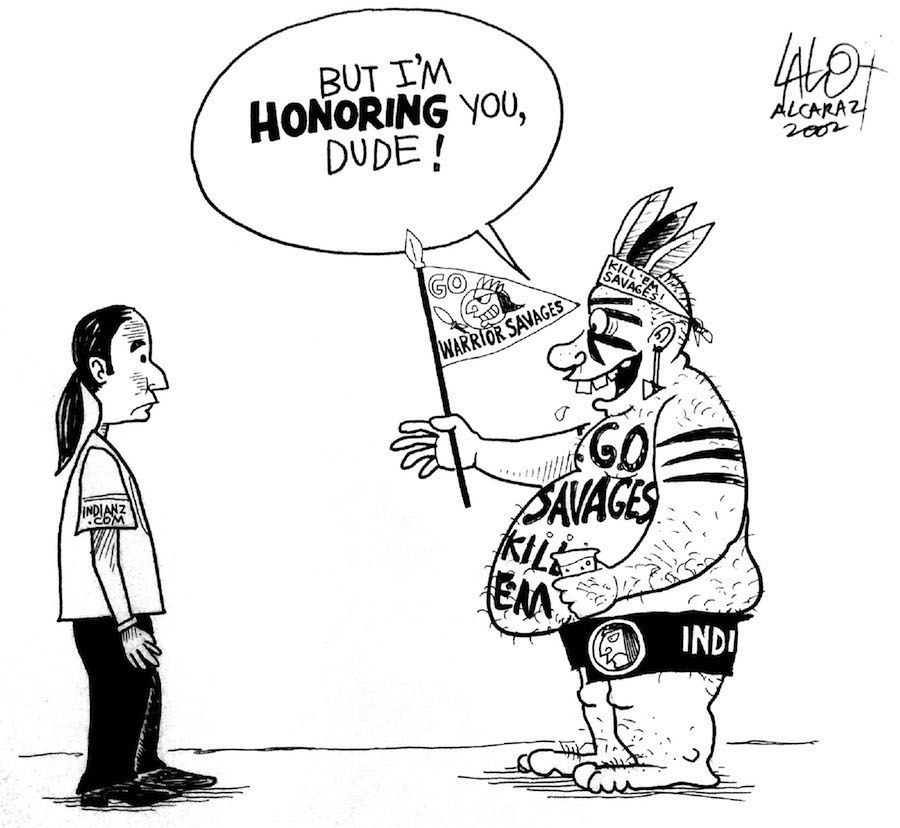What You Need to Know About Cultural Appropriation
Written by Women’s Center student staff member Hannah Wilcove.
As of March 23rd, 2017, Dr. Adrienne Keene had written over 15 different posts about the specific issue of celebrities wearing Native American headdresses. If you search for the term “headdress” on her blog, 12 entire pages of results come up, and spoiler alert: most of them are not praising people for doing it right. She has been writing about this phenomenon for seven years, and as she says, “[i]n internet years that’s truly forever.”
So, from all of this comes the question: What is cultural appropriation? And why is it a big deal?
A great definition comes from Maisha Z. Johnson at Everyday Feminism: “cultural appropriation is when somebody adopts aspects of a culture that is not their own.” An example many people are familiar with is the prevalence of Native American headdresses, jewelry, and clothing worn by non-Natives at music festivals like Coachella. It’s easy for people in our society to see when it happens, but it’s often difficult for people to see why it matters. This is because many people use only the above definition, which is accurate, but not comprehensive. This is how we get ordinary people trying to correct the experts, as seen on Dr. Keene’s Instagram below:
 A recent example from Adrienne Keene on how cultural appropriation does NOT work.
A recent example from Adrienne Keene on how cultural appropriation does NOT work.
In fact, this kind of commentary is so common, there’s a BINGO card for it (we would take a bet that Adrienne has a “blackout”):
 Originally created by Dr. Sheila Addison.
Originally created by Dr. Sheila Addison.
Essentially, it all comes down to power dynamics. The difference between non-Natives wearing a headdress and people other than (white) Americans eating a hamburger is that the former is a marginalized group in our society. Admiration crosses the line and becomes appropriation when the behavior is exploitative and/or contributes to the stereotyping and stigmatization of a culture. The headdresses seen at Coachella rely on stereotypes that ultimately collapse over 500 tribes into one fabricated culture. This one representation is more than just inaccurate; it’s harmful because it erases the current presence of Native Americans, which is still very much affected by a history of colonization and genocide. The following cartoon sums it up pretty nicely:

On a more general note, this is something that extends beyond Native Americans to all subjugated groups (read: not white people). For many people, their race or culture is not a costume they can take off at the end of the day, but rather something that is both a source of pride and a source of oppression. People have fought and are still fighting for the right to exist on an equal playing field where their identity is respected. When it comes to things like what to wear to a music festival, what Halloween costume to choose, what hairstyle looks best, or what forms of dance to try, there are many options, and it is entirely possible to choose one that does not rely on stereotypes. There are real people and extensive histories behind these material things. It is important that we learn about them and respect them as equal members of society.
Further reading below:
- To learn more about cultural appropriation and specific examples check out this article from Everyday Feminism
- Read more of our What You Need to Know series for CSJ: Rise
- But Why Can’t I Wear a Hipster Headdress? by Adrienne Keene
- Valentino didn’t learn anything. by Adrienne Keene
- Adrienne Keene’s Twitter @NativeApprops
- Adrienne Keene’s Instagram
Check out the full list of Critical Social Justice: Rise events here.
Posted: October 11, 2017, 8:58 AM